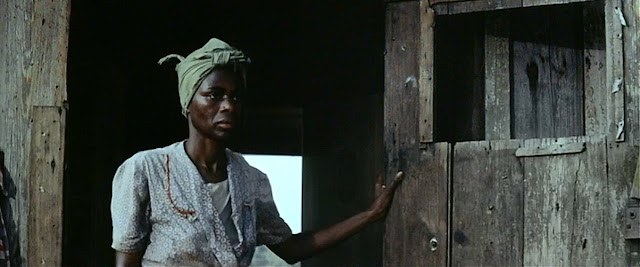Memories and Change: Part 2. A look now at a wholly original, contemporary movie, which attempts to replicate how we see our memories from childhood and beyond. Its very style suggests the constancy of change.
“Tell us a story from before we can remember.” A young boy’s request to his mother, in “The
Tree of Life”
The endless uncertainty about returning to life as we
remember it, before the pandemic canceled, postponed, or changed things beyond
recognition, has sent many of us into various stages of confusion and
depression.
As I struggled to remember the things and places I loved, that
are so far unavailable or are considered unsafe: a conversation at home with a
group of friends; a table in a pleasantly crowded coffee shop; a new film or
play in a theater; dinner at a favorite spot with my husband; daily trips to
the gym; I rediscovered a favorite film from 2011 that provided some lofty perspective.
“The Tree of Life” remains one of the most unconventional
and beautifully thoughtful pieces of mainstream cinema I have ever encountered.
While a movie like “How Green Was My Valley” is a classic
use of narrative to portray memory, “The Tree of Life” treats memory as a rapid
series of disjointed, short-lived moments.
It is a poetic mosaic of images and music that replicates the way our
brains work to create memory.
I’ve never seen a more accurate and effective depiction of
the way our minds recall minute impressions of concrete events and fleeting fantasy,
while leaving us to reflect, to ponder and to feel, rather than to focus
exclusively on a narrative.
More than that, “The Tree of Life” reaches profound levels
of beauty and even exaltation, a rare film that uses its minimal plot and
gorgeous imagery to speculate on the meaning of the universe and our place
within it.
Terence Malick, a famously private film director who earned
a degree in philosophy from Harvard before turning to filmmaking, made his directing
debut in 1973 with the elegiac crime-romance “Badlands”. Painstaking in his development of projects, “The
Tree of Life”, released in 2011, was only his fifth film in 38 years.
The movie functions on a higher plane, focusing on spiritual
matters and abstract ideas. Not
surprisingly, mainstream audiences were strongly polarized by it. A Best
Picture Oscar, for which it was nominated and lost, would have seemed
inadequate for this ambitious accomplishment, like awarding Saint Peter’s
Basilica the Good Housekeeping Seal of Approval.
The only indication that the film sought popular appeal was
the inclusion of two A-list stars: Brad Pitt (also a co-producer) as the
demanding, 50’s-era Father, Mr. O’Brien, and Jessica Chastain as the soft,
giving, and grieving Mother, Mrs. O’Brien.
The plot is more like a premise, in the way that rhythm is
to a piece of music, in this case a way to support the weight of the film’s
ideas. Mother, in a hushed monolog,
explains the difference between Nature and Grace. After her voice-over meditation, she receives
a tragic telegram that J. L., one of her three sons, only 19
years old, has been killed.
The eldest son, Jack, played as an adult by Sean Penn, is an
architect. Years later, he sullenly meditates on life, and on his deceased brother, whom he saw as a pure soul.
As Mother cries out to a higher power, to make sense of the loss,
the film moves into an extraordinary sequence lasting 17 minutes, with no
dialog, comprised of powerful sounds, images and music. Malick ambitiously recreates the origins of
the universe, from the Big Bang to the dinosaur era, culminating in a symbolic
birth, as Jack arrives as Mother and Father’s first child.
The sequence is reminiscent of the light-show in “2001: A
Space Odyssey”. Douglas Trumbull, who designed the “2001” sequence, was called
out of retirement to create the Origin of the Universe here, using no CGI
effects, but the kind of physical and in-camera effects used in the earlier
film. The scene is confounding and awe-inspiring.
The body of the film is a rapid chronicle of Jack and his
two brothers growing up in a their late-1950s small town outside of Waco Texas.
Infancy, first steps, siblings, play, rebellion, anger,
confusion, death, disaster, mystery, parental love and disappointment, brotherly
love, sexual yearning, all of the touchstones of a human life are depicted quickly
and then the film moves on.
The final sequence is Jack’s fantasy of reunion with his
loved ones, at the world’s end. In less
than two hours and 30 minutes, we are witness to Malick’s personal vision of
the history of the universe, with the lives of these boys as the centerpiece.
Malick’s editing and photographic style, as well as the epic
nature of what he attempts here, provide a couple of interesting messages to
ponder. On one hand, our lives are as
fleeting as each individual shot in the picture, each beautiful in itself, but needing the other pieces to give it full meaning.
On the other hand, and even more profound, Malick
demonstrates that the birth of one person is as momentous as the creation of an
entire universe. And death is just another destination on an ever-moving
voyage. The film’s tone of beauty and
reverence may be a comfort for anyone coming to terms with the death of a loved
one.
“The Tree of Life” is not really a linear film; it is more like
a piece of music, or a painting. The
camera is always moving, in a constant forward motion. The sun is visible in almost every scene, a
symbol of a higher power, or the origin of life, and one of many visual motifs
that tie the film together.
The film moves like a constantly running river. To get the most from it, it is best to step
in, and allow it to carry you along, letting the marriage of images and music
leave an impression as the ideas widen and make sense in an intangible, poetic
sense. The accumulation of shots and
brief sequences reveals a whole picture of sorts, like a true mosaic.
The film’s disjointed and constantly shifting narrative
intersperses fantasy and subtle connections of time within its family story. An unexpected shot of Mother levitating is
the obvious musing of a young son who sees her as a saintly figure. A river, where a dinosaur drinks early in the
film, appears much changed later, as one of the boys casually finds a dinosaur
bone in the tall grass where the brothers play.
The film is breathtaking to look at. Most of the credit goes to Emmanuel Lubezki
for his consistently mellow lighting and color, recreating a plausible 1950s
suburb, while using the unusual angles and movement to give the film a feeling
of something imponderable, mysterious.
Malick’s film, which borrows heavily from his own family and
boyhood, has selected unforgettable pieces of music. These mostly classical pieces enhance the
photographic effects and fix each sequence forever in our subconscious, even if
they pass by too quickly to grasp them all at first viewing. A second viewing, at least, is a must.
After Jack returns from his reverie about the afterlife, there
is a cut to a field of sunflowers, before we follow him silently through his
office complex, the windows of the stupendous glass buildings around him
reflecting the trees. The final shot is
held for several seconds on a vast bridge.
I wonder if Malick is inviting us to see life, death, spirituality, or whatever
we took with us from the film, as a bridge between Nature and Grace?















